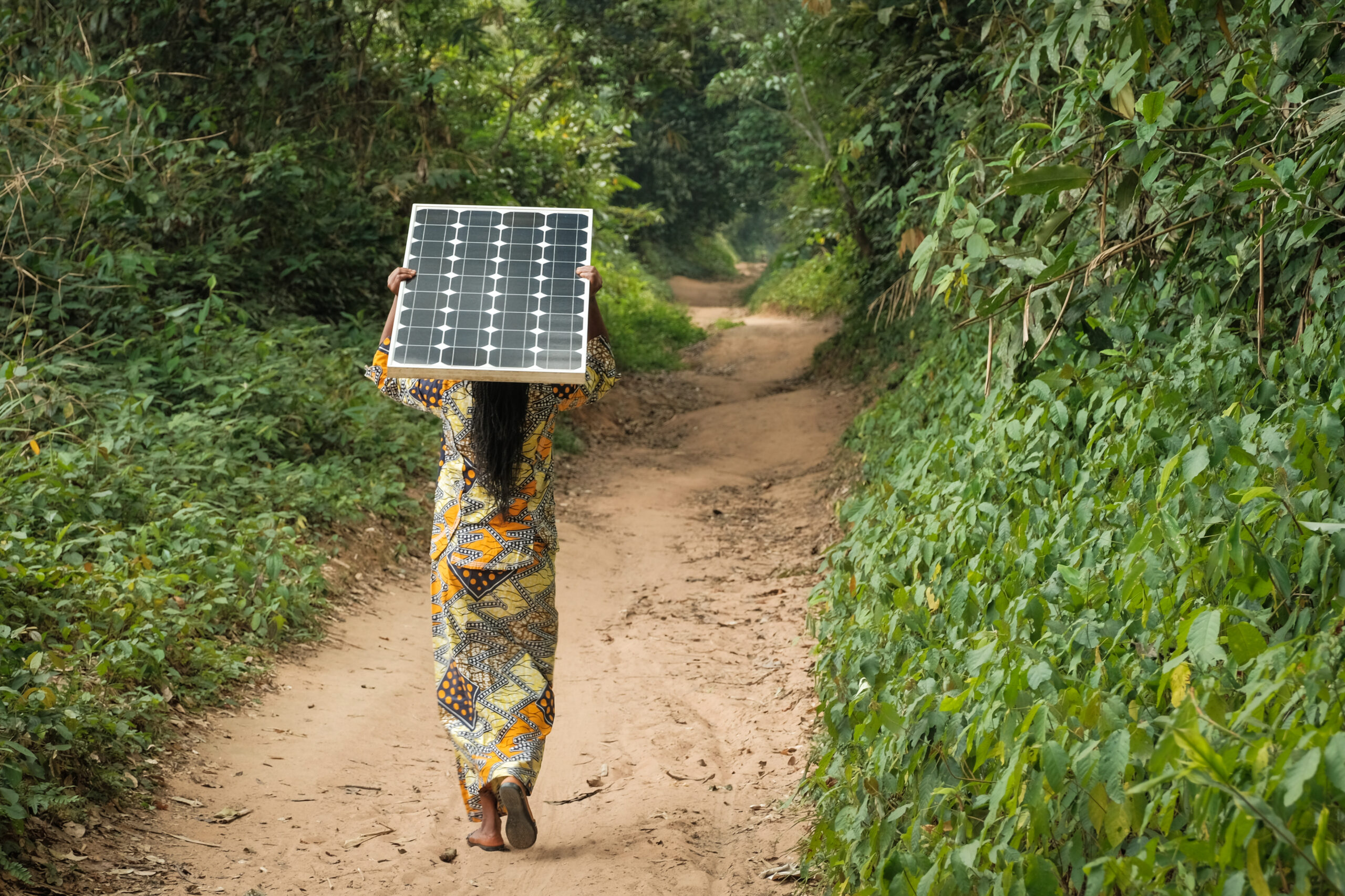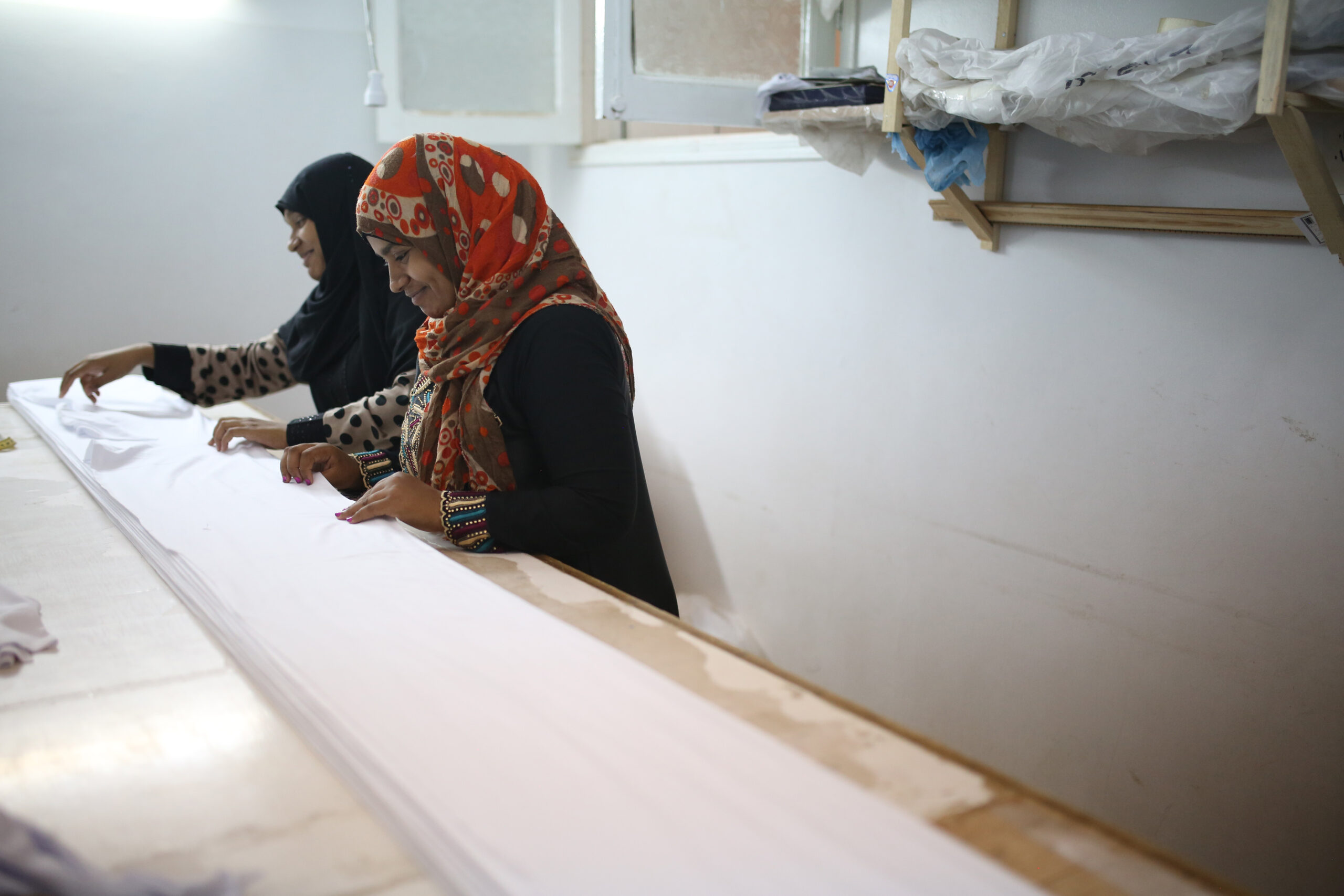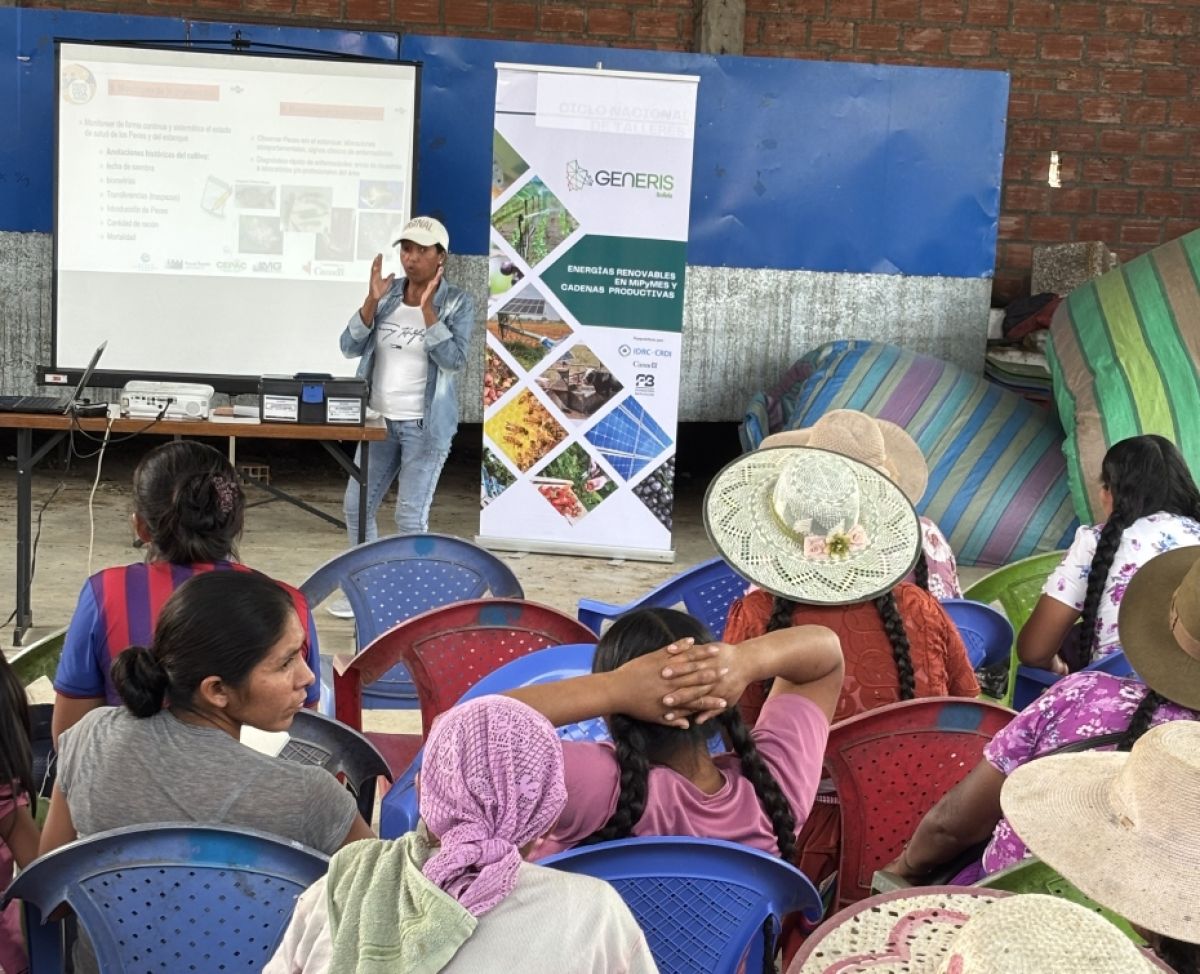Woman carrying a solar pannel near Yangambi, DRC. Axel Fassio/CIFOR via Flickr. CC BY-NC-ND 2.0 https://flic.kr/p/286BAUy

Powering Change: The Critical Role of Women and Youth in Sustainable Energy Transformation
9 April 2025
How do we build economic systems that recognise and work within the biophysical limits of our finite planet while simultaneously reducing poverty and inequality?
This has become a defining question of our time, and the global transition to clean energy is increasingly considered an important vehicle via which we might address this ‘trilemma.’ Concerns about environmental sustainability and fossil fuel insecurity have encouraged countries around the world to transition to low-carbon energy supplies derived from clean renewables such as solar, hydro, bioenergy, geothermal and wind. Since producing and distributing clean energy is more labour intensive than producing and distributing fossil fuels, this shift is creating new employment opportunities, as well as addressing energy poverty in remote or under-served communities everywhere in the world.
Although there is tremendous potential to create employment and opportunities for entrepreneurship in clean energy almost everywhere in the world, there is a growing concern that women, who are already underrepresented in the energy sector, will become even more marginalised if gender equity policies and programmes are not proactively planned and implemented. Without appropriately targeted training, education, apprenticeships, employment placement, financial tools and supportive social policies, transitioning to clean energy may exacerbate existing gender inequities and hinder global poverty alleviation goals, including the SDGs. Empirical data on the participation of women and youth in the clean energy sector remains weak and scattered, and so do policy interventions designed to optimise their participation. This is precisely what Canada’s International Development Research Centre (IDRC) is trying to accomplish via its Clean Energy for Development: A Call to Action (CEDCA) initiative, which supports 12 research projects that operate in 27 countries across three thematic bases: clean energy transition, micro-, small and medium-sized enterprises (MSMEs), and women and youth.
This research for policy and practice report showcases three of these research projects and draws out rigorous evidence to inform policymaking that advances the participation of women and youth in the clean energy sector.
Authored by Bipasha Baruah, Ann Kingiri, Daniel Musyoka, Michele Diop Niang, Luciano Barin Cruz, Ibrahima Dally Diouf, Syrine Gabsi, Yasmeen Oraby, Jannah Abdulmajeed, Atif Kubrusi.
Summary
How do we build economic systems that recognise and work within the biophysical limits of our finite planet while simultaneously reducing poverty and inequality?
This has become a defining question of our time, and the global transition to clean energy is increasingly considered an important vehicle via which we might address this ‘trilemma.’ Concerns about environmental sustainability and fossil fuel insecurity have encouraged countries around the world to transition to low-carbon energy supplies derived from clean renewables such as solar, hydro, bioenergy, geothermal and wind. Since producing and distributing clean energy is more labour intensive than producing and distributing fossil fuels, this shift is creating new employment opportunities, as well as addressing energy poverty in remote or under-served communities everywhere in the world.
Cite this publication
Baruah, B. et al. (2025) Powering Change: The Critical Role of Women and Youth in Sustainable Energy Transformation, Clean Energy for Development: A Call to Action (CEDCA) Research for Policy and Practice, Brighton: Institute of Development Studies, DOI: 10.19088/CEDCA.2025.001
Copylearning
Theme
Clean Energy, Gender, Inclusion
Documents
Women’s leadership and innovative finance: Driving climate resilience and sustainable development
Thursday 20 November 2025
This panel, hosted as part of COP30, will explore how women’s leadership and inclusive financial innovation serve as powerful levers for climate resilience and sustainable development. The session will highlight concrete examples internationally, focusing on the intersection of gender equity, entrepreneurship, and climate action. Panellists: Adel Ben Youssef, Université Côte d’Azur – featured Clean Energy […]
Unlocking the Potential of Small and Medium Businesses and Entrepreneurs in the Clean Energy Transition
3 December 2025
This report highlights outcomes and recommendations from the T20 Side Event ‘Unlocking the Potential of Small and Medium Businesses and Entrepreneurs in the Clean Energy Transition’, held in Johannesburg on 17 October 2025. It presents seven recommendations for concrete steps to turn the G20’s green energy principles into practice, with South Africa’s presidency positioned as […]
Supporting economic growth and climate action through renewable energy: Insights from fish farming in Bolivia
8 December 2025
Agriculture continues to represent a critical source of foreign exchange and job creation throughout the Global South. The future growth and development of the sector depend on farmers, processors and traders finding innovative ways to produce more and better-quality products or to reduce costs, without harming the natural resource base. Renewable energy — in particular, […]



